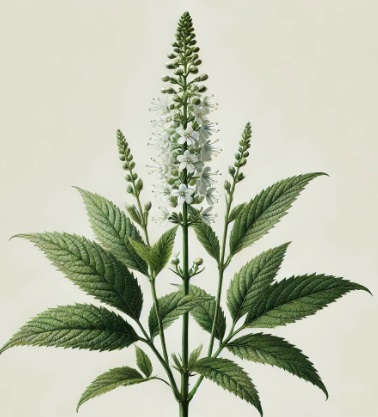The Alismataceae family is a family of plants within the order Alismatales, consisting of about 12 genera and approximately 85 species. These plants are primarily aquatic or semi-aquatic and are found in wetlands, ponds, marshes, and along the edges of freshwater bodies. The family is known for its herbaceous plants that have distinct aquatic adaptations.
General Description
The plants in the Alismataceae family are typically perennial herbs that grow in or near water. They often feature long, narrow leaves that are typically arranged in rosettes or basal clusters, which help them float or grow in submerged conditions. The flowers are usually small and white or pink, and they are arranged in spikes or panicles. Many species in this family are characterized by the presence of a unique, often strap-shaped leaf that can be either floating or upright, depending on the species and the growing conditions.
Some of the best-known members of this family include Alisma plantago-aquatica, commonly known as water plantain, which is widely distributed across North America, Europe, and Asia.
Chemical Composition
Plants in the Alismataceae family contain a variety of bioactive compounds, such as flavonoids, tannins, alkaloids, and saponins. These compounds contribute to their medicinal properties, especially in species like Alisma plantago-aquatica, which has been traditionally used in herbal medicine for its diuretic, anti-inflammatory, and detoxifying effects. The rhizomes of some species in this family are known to contain starches, saponins, and sugars, which contribute to their medicinal and nutritional value.
Physical Properties
Members of the Alismataceae family typically have herbaceous stems and often display large, broad, and elongated leaves, which can be either floating or upright. The flowers are usually small and inconspicuous but can be quite numerous, forming spikes or clusters. The seeds are often small, and the plant’s growth habit is adapted to aquatic or wetland environments, with specialized structures for buoyancy and water retention.
The plants are adapted to submerged or waterlogged conditions, and their rhizomes or tubers often store nutrients, which allows them to survive during dry periods or in fluctuating water levels.
Production Process
The Alismataceae family is generally propagated by seed or by division of rhizomes. In traditional medicine, the rhizomes and roots of plants like Alisma plantago-aquatica are harvested, typically after the plant has matured, for use in various medicinal preparations. These parts are often dried or made into tinctures, powders, or extracts to preserve the bioactive compounds.
In cultivation, these plants are often grown in wetlands or water gardens, where they can thrive in the shallow water and moist soil environments they naturally inhabit. They are also useful in wetland restoration projects, as they help in the stabilization of soil and the improvement of water quality by filtering excess nutrients.
Applications
Medicinal
Some species of Alismataceae, especially Alisma plantago-aquatica, have been used in traditional medicine for their diuretic, anti-inflammatory, and detoxifying properties. The plant is often used to treat conditions such as urinary retention, kidney stones, and general inflammation. The rhizomes are typically used in herbal preparations, such as teas, tinctures, or capsules. Other members of the family have been used to treat digestive issues and as a general tonic for strengthening the body.
Environmental
The Alismataceae family plays an important ecological role in wetland ecosystems. These plants help in stabilizing the soil, preventing erosion, and contributing to the filtration of water. They absorb excess nutrients and can help prevent the eutrophication of water bodies by reducing nutrient overload. In wetland restoration projects, these plants are often used to restore the natural habitat and improve the water quality.
Ornamental
Some species of Alismataceae, particularly Alisma plantago-aquatica, are grown in water gardens or as ornamental plants in ponds due to their attractive foliage and flowering spikes. These plants are valued for their ability to thrive in shallow water and their aesthetic appeal.
Aquatic landscaping: Used in water gardens and wetland restoration projects.
Environmental and Safety Considerations
The plants in the Alismataceae family are generally considered safe for use in herbal medicine when consumed in moderation. However, certain species may cause mild gastrointestinal upset if taken in excessive quantities. It is always recommended to use these plants under the guidance of a trained herbalist or healthcare provider, especially for individuals with pre-existing health conditions. Since these plants often grow in wetland environments, they should be managed sustainably to prevent over-harvesting and to protect their natural habitats.
INCI Functions
- Diuretic: Increases urine production and helps with the elimination of excess fluids.
- Anti-inflammatory: Reduces inflammation in tissues.
- Detoxifying: Helps in the removal of toxins from the body.
In conclusion, the Alismataceae family consists of aquatic or semi-aquatic plants with several ecological and medicinal benefits. These plants are valuable both in traditional medicine and for environmental conservation, particularly in wetland ecosystems. Sustainable use and cultivation of these plants can ensure their continued availability for medicinal, ornamental, and ecological purposes.
![]() Alismataceae
Alismataceae 

